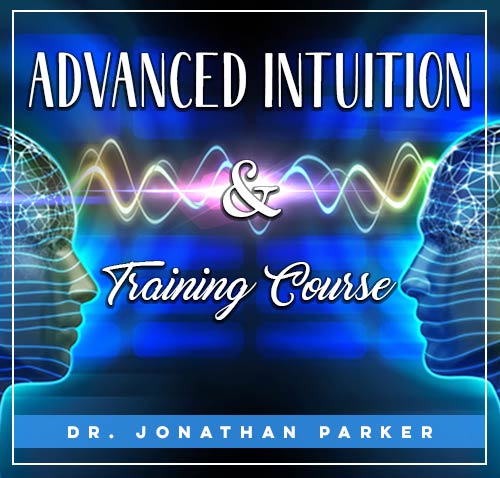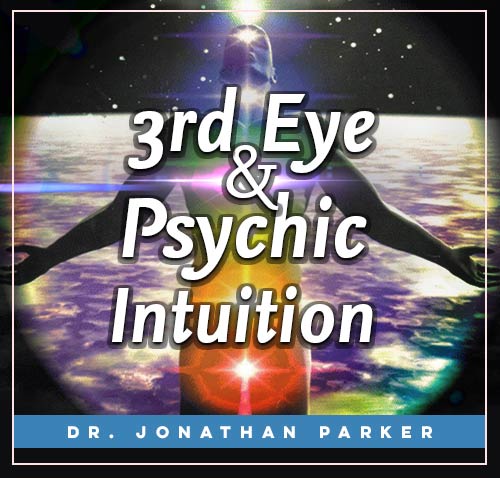Sensory Storylines: Navigating Histories with Psychometry

Before diving in, please note: This post is for informational purposes only. If you’d like to know more about how we approach topics, feel free to check out our friendly Disclaimer Page.
Hey there, amazing readers! 🖐️ Just a quick note: yes, we know there are a lot of ads here. Trust us, we get it—it’s not the prettiest look, but they help us keep this blog alive and kicking. Those pesky little ads cover the costs of all the behind-the-scenes magic, from hosting and tech stuff to creating content we hope you’ll love.
We’re committed to delivering quality posts, and your support (even just sticking around despite the ads) means everything to us. So, bear with us, and thanks for helping us keep the good vibes rolling. Now, on to the fun stuff! 😉
TRANSLATE BUTTON AT THE END OF THE ARTICLE
Overview
Sensory storylines, a concept that combines the power of storytelling with psychometry, provide an immersive and engaging way to navigate through history.
By harnessing the abilities of psychometry, individuals are able to tap into the sensory experiences of historical artifacts, unlocking hidden stories and gaining a deeper understanding of the past.
This article will delve into the intricacies of sensory storylines, exploring how psychometry works, the science behind it, and the role of senses in historical interpretation.
Furthermore, it will discuss the process of crafting immersive storylines, the impact of sensory storytelling on connection and empathy, as well as the challenges and limitations faced in implementing sensory storylines.
Finally, we will explore future applications and the potential for expanding historical interpretation through this innovative approach.
Introduction to Sensory Storylines
Sensory storylines provide a unique way to experience history by incorporating the senses into the narrative.
Rather than relying solely on visual and auditory cues, sensory storylines engage the sense of touch, taste, and smell, creating a multi-dimensional experience that allows individuals to immerse themselves in the past.
By combining psychometry with storytelling techniques, these sensory experiences bring history to life in a way that traditional methods cannot.
When exploring a historical artifact, individuals are not only able to see and hear the story behind it but also feel, taste, and smell the world it once belonged to.
Understanding the Power of Psychometry
Psychometry is the ability to gain information or insights about an object or person by touching it.
It is believed that objects can retain energy or “imprints” from their past, which can be sensed by individuals with the psychic ability of psychometry.
These impressions can include emotions, events, or even specific details related to the object’s history.
By using psychometry, individuals can tap into these imprints and gain a deeper understanding of the object’s past, effectively navigating through history and unlocking hidden stories.
How Psychometry Unlocks Hidden Stories
Psychometry allows individuals to uncover hidden stories by tapping into the energy imprints left on historical artifacts.
When an individual touches an object, they may experience a variety of sensations, emotions, or even vivid images that are connected to the object’s past.
For example, holding a letter from a soldier in World War II may evoke feelings of fear, sadness, or excitement, providing a glimpse into the emotional experiences of the time.
By interpreting these impressions, individuals can reconstruct narratives and gain insight into the lives and experiences of those who came before.
The Science Behind Sensory Storylines
While psychometry may seem mystical, there is a scientific basis behind its workings.
It is believed that objects can absorb and retain energy due to their atomic and molecular structures.
This energy can then be sensed by individuals with heightened sensitivities or psychic abilities.
The specific mechanisms behind psychometry are still not fully understood, but studies have shown a correlation between an individual’s ability to sense energy imprints and their level of empathy.
It is suggested that psychometry may involve a combination of sensory perception, memory recall, and emotional resonance.
Exploring the Role of Senses in History
The senses play a crucial role in our understanding of history.
Sight and sound have traditionally been the primary senses used to interpret historical events.
However, by incorporating touch, taste, and smell into historical narratives, a deeper level of engagement and understanding can be achieved.
These senses provide a direct connection to the past, allowing individuals to experience history in a more intimate and tangible way.
By engaging multiple senses, sensory storylines create a more holistic and immersive historical experience.
Unveiling the Past through Touch, Taste, and Smell
When exploring history through sensory storylines, touch, taste, and smell become powerful tools for unveiling the past.
Touching a piece of clothing worn by a historical figure can evoke a sense of their presence, allowing individuals to imagine the feel of the fabric against the skin.
Tasting food from a specific time period can provide insight into the flavors and culinary traditions of the era.
Smelling the scent of a particular fragrance can transport individuals to a specific time and place, evoking memories and associations.
Unlock your potential with the Advanced Intuition Training Course – start here.
By engaging these senses, sensory storylines create a deeper connection to history, enabling a more comprehensive understanding of the past.
Enhancing Historical Narratives with Sensory Experiences
Sensory experiences enhance historical narratives by providing a more immersive and engaging way to learn about the past.
By incorporating the senses into storytelling, sensory storylines create a deeper emotional connection to historical events and figures.
Rather than simply reading about historical events or viewing artifacts from a distance, individuals can actively engage with the past through their senses.
This not only enhances the learning experience but also fosters a greater appreciation for history and a deeper understanding of its impact on the present.
The Art of Crafting Immersive Storylines
Crafting immersive storylines for sensory experiences requires careful attention to detail and creative storytelling techniques.
Each sensory element must be carefully chosen to evoke the desired emotions and provide an authentic representation of the past.
For example, if creating a sensory storyline around a historical battle, the touch element could involve holding replicas of weapons used during the time.
The taste element could include sampling food rations similar to those consumed by soldiers.
The smell element could incorporate scents of gunpowder or the natural environment of the battlefield.
By carefully integrating these sensory elements, storytellers can create a truly immersive historical experience.
Creating Connection & Empathy through Sensory Storytelling
Sensory storytelling has the power to create a deep connection and empathy with historical figures and events.
By engaging multiple senses, individuals are able to step into the shoes of those who lived in the past, gaining a firsthand understanding of their experiences.
This immersive approach fosters empathy by allowing individuals to feel the emotions, sensations, and challenges faced by historical figures.
Sensory storylines encourage a more personal and emotional connection to history, enabling a greater appreciation for the complexities of the human experience throughout time.
Challenges and Limitations of Sensory Storylines
While sensory storylines offer a unique and engaging approach to historical interpretation, there are challenges and limitations to consider.
One of the main challenges is the availability and preservation of historical artifacts that can be used in sensory experiences.
Not all artifacts are suitable or accessible for direct interaction, especially those of significant historical value or fragility.
Additionally, the interpretation of sensory experiences can be subjective and vary from person to person, making it challenging to create a universally immersive historical narrative.
Furthermore, sensory storylines require careful research and attention to historical accuracy to ensure the authenticity of the experience.
Future Applications: Expanding Historical Interpretation
The future of sensory storylines holds immense potential for expanding historical interpretation.
As technology continues to advance, virtual and augmented reality can be integrated into sensory experiences, allowing individuals to interact with historical environments and artifacts in a more realistic and immersive way.
Furthermore, advancements in psychometry research may provide a deeper understanding of the mechanisms behind this phenomenon and enhance the accuracy of sensory interpretations.
With continued innovation and exploration, sensory storylines have the potential to revolutionize the way we learn, understand, and connect with history.
Conclusion
By combining the power of psychometry with storytelling techniques, sensory storylines offer a unique and immersive approach to navigating history.
By engaging the senses, individuals can unlock hidden stories, connect with historical figures and events on a deeper level, and gain a more comprehensive understanding of the past.
While challenges and limitations exist, the future of sensory storylines holds immense potential for expanding historical interpretation and creating engaging educational experiences.
As we continue to explore and innovate, sensory storylines have the power to reshape the way we learn, appreciate, and connect with history.

The Enlightenment Journey is a remarkable collection of writings authored by a distinguished group of experts in the fields of spirituality, new age, and esoteric knowledge.
This anthology features a diverse assembly of well-experienced authors who bring their profound insights and credible perspectives to the forefront.
Each contributor possesses a wealth of knowledge and wisdom, making them authorities in their respective domains.
Together, they offer readers a transformative journey into the realms of spiritual growth, self-discovery, and esoteric enlightenment.
The Enlightenment Journey is a testament to the collective expertise of these luminaries, providing readers with a rich tapestry of ideas and information to illuminate their spiritual path.
Our Diverse Expertise 🌟
While our primary focus is on spirituality and esotericism, we are equally passionate about exploring a wide range of other topics and niches 🌍📚. Our experienced team is dedicated to delivering high-quality, informative content across various subjects ✨.
To ensure we provide the most accurate and valuable insights, we collaborate with trusted experts in their respective domains 🧑🏫👩🏫. This allows us to offer well-rounded perspectives and knowledge to our readers.
Our blog originally focused on spirituality and metaphysics, but we’ve since expanded to cover a wide range of niches. Don’t worry—we continue to publish a lot of articles on spirituality! Frequently visit our blog to explore our diverse content and stay tuned for more insightful reads.







